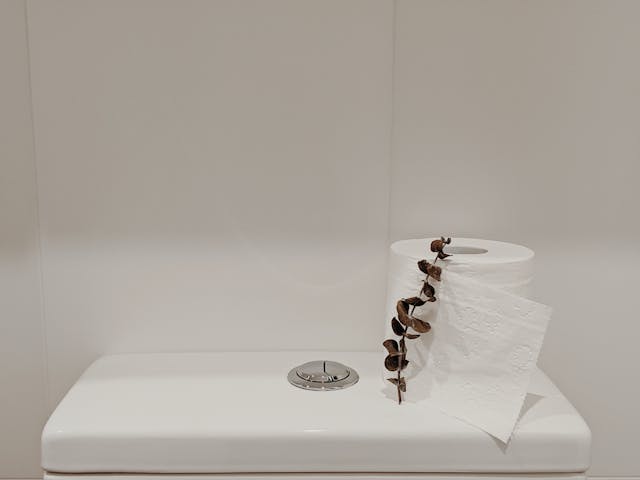Signs That Indicate It's Time for a Toilet Replacement
Toilets are essential fixtures in every home, providing a function we often take for granted. Over time, however, even the sturdiest toilets may show wear and tear, leading to inefficiency or functional issues. Recognizing when to replace your toilet can save you from complications and unexpected expenses. We will explore various signs indicating it may be time to consider a toilet replacement from https://refinedhomeservices.ca/plumber-toronto/, helping ensure your bathroom remains functional and efficient.
Cracks and Chips in the Toilet Bowl
One of the most apparent signs that it might be time for a toilet replacement is the presence of cracks or chips in the toilet bowl. These imperfections can occur for various reasons, including age, physical impact, or manufacturing defects. Even small cracks can lead to significant problems. Water can seep through these cracks, resulting in leaks that can cause damage to your bathroom floor or subfloor over time. Moreover, a chipped toilet can harbor bacteria, making it more challenging to maintain cleanliness. If you notice any ceramic or porcelain surface damage, it's essential to assess the severity.
In many cases, a replacement is a more effective and long-term solution than attempting repairs, especially when cracks compromise the toilet's structural integrity. Additionally, the aesthetics of a chipped toilet may need to be improved in terms of the overall appearance of your bathroom. Therefore, if you spot any damage, it’s wise to consider upgrading to a new, more durable model.
Frequent Clogging or Overflowing Issues
If your toilet frequently clogs or overflows, this could be a sign of a more serious issue within the plumbing system or the toilet itself. While occasional clogs are normal, persistent problems may indicate that your toilet is nearing the end of its useful life. Older toilets, especially those manufactured before modern efficiency and flushing power standards, need help to handle solid waste effectively. This can lead to repeated clogs and an increasing reliance on plungers or chemical drain cleaners, harming your plumbing over time. If you are dealing with frequent clogs, it may be time to evaluate whether a newer model could improve performance. Modern toilets are designed to use less water while offering better flushing power, potentially eliminating many clogging issues. By replacing your toilet, you enhance functionality and minimize the risk of water damage and associated costs that come with frequent overflow situations.
High Water Bills
Another critical indicator that your toilet may need replacement is an unexpected increase in your water bill. Toilets account for a significant portion of household water usage, and older models can be notoriously inefficient, consuming up to 7 gallons per flush. If you notice that your water bill has risen dramatically without a corresponding increase in usage, it could be a sign that your toilet is leaking or malfunctioning. Older toilets may also be less efficient, leading to higher water consumption. A modern toilet can significantly reduce water usage, with many models utilizing only 1.28 gallons per flush or less. Upgrading to a more water-efficient model can lower your monthly water bills while contributing to water conservation efforts. Therefore, if your utility costs have increased and you suspect your toilet might be a culprit, consider investing in a new, more efficient toilet that offers long-term savings.
Constant Noises from the Toilet
If you frequently hear noises from your toilet, such as running water, hissing, or gurgling sounds, it may indicate something is amiss. Constant running is typically caused by a faulty flapper valve, which fails to seal properly, allowing water to leak from the tank into the bowl. If this problem persists despite attempts to fix it, it could mean that your toilet is outdated and no longer functions efficiently. Such issues not only waste water but also lead to increased water bills. While minor repairs may provide a temporary fix, ongoing problems often signal that it may be time for a replacement. Additionally, other sounds like gurgling could indicate clogs or issues with the plumbing that might necessitate a toilet upgrade. Replacing your toilet can eliminate these persistent noises, providing a quieter and more efficient bathroom experience.
Toilet Age and Efficiency
Toilet technology has advanced significantly, making older models less efficient than modern designs. If your toilet is more than 20 years old, consider replacing it. Older toilets often use more water per flush and may not comply with current standards for water efficiency. Modern toilets are engineered to deliver a powerful flush with less water, making them better for both the environment and your wallet. When assessing whether to replace an old toilet, consider the long-term benefits of a newer model, such as lower water consumption and improved flushing capabilities. In many cases, the investment in a new toilet pays off quickly through reduced water bills and enhanced performance. Additionally, many regions offer rebates or incentives for upgrading to water-efficient models, making this an even more appealing option for homeowners looking to save.
Recognizing the signs that indicate it’s time for a toilet replacement can save you time, money, and inconvenience in the long run. Many indicators signal that an upgrade is necessary, from visible damage like cracks and chips to issues such as frequent clogs, high water bills, and persistent odors. Investing in a new toilet can improve efficiency, enhance your bathroom’s functionality, and create a more pleasant living environment. By addressing these issues proactively, you ensure that your bathroom remains a space of comfort and convenience, free from the frustrations of an aging toilet.

